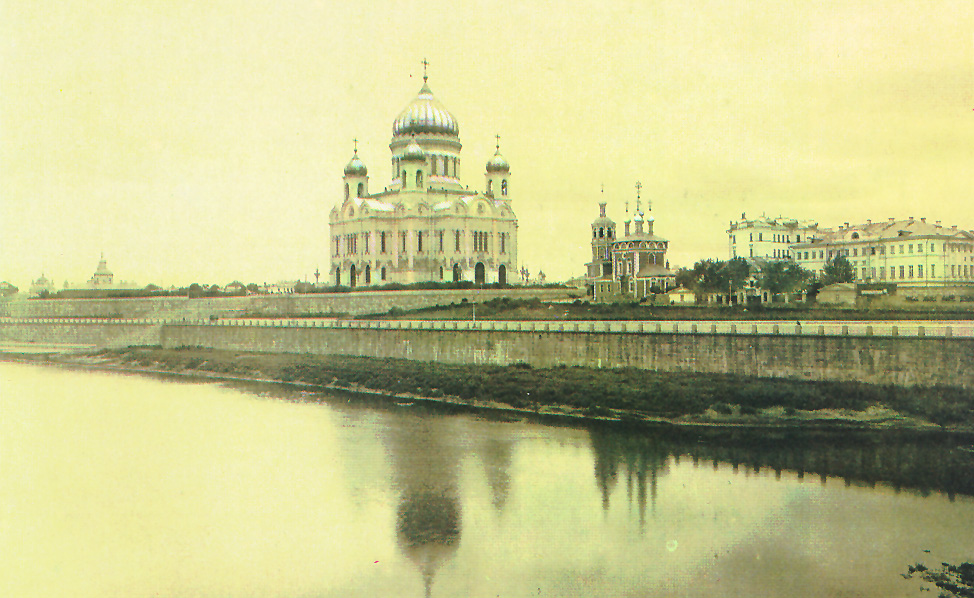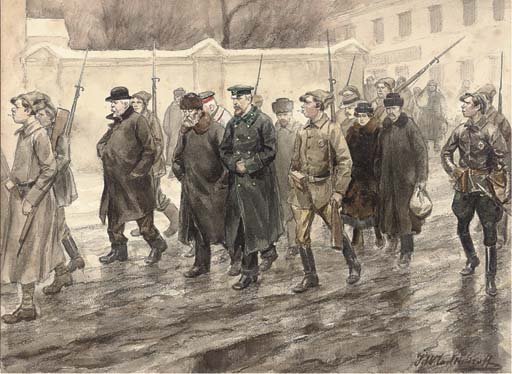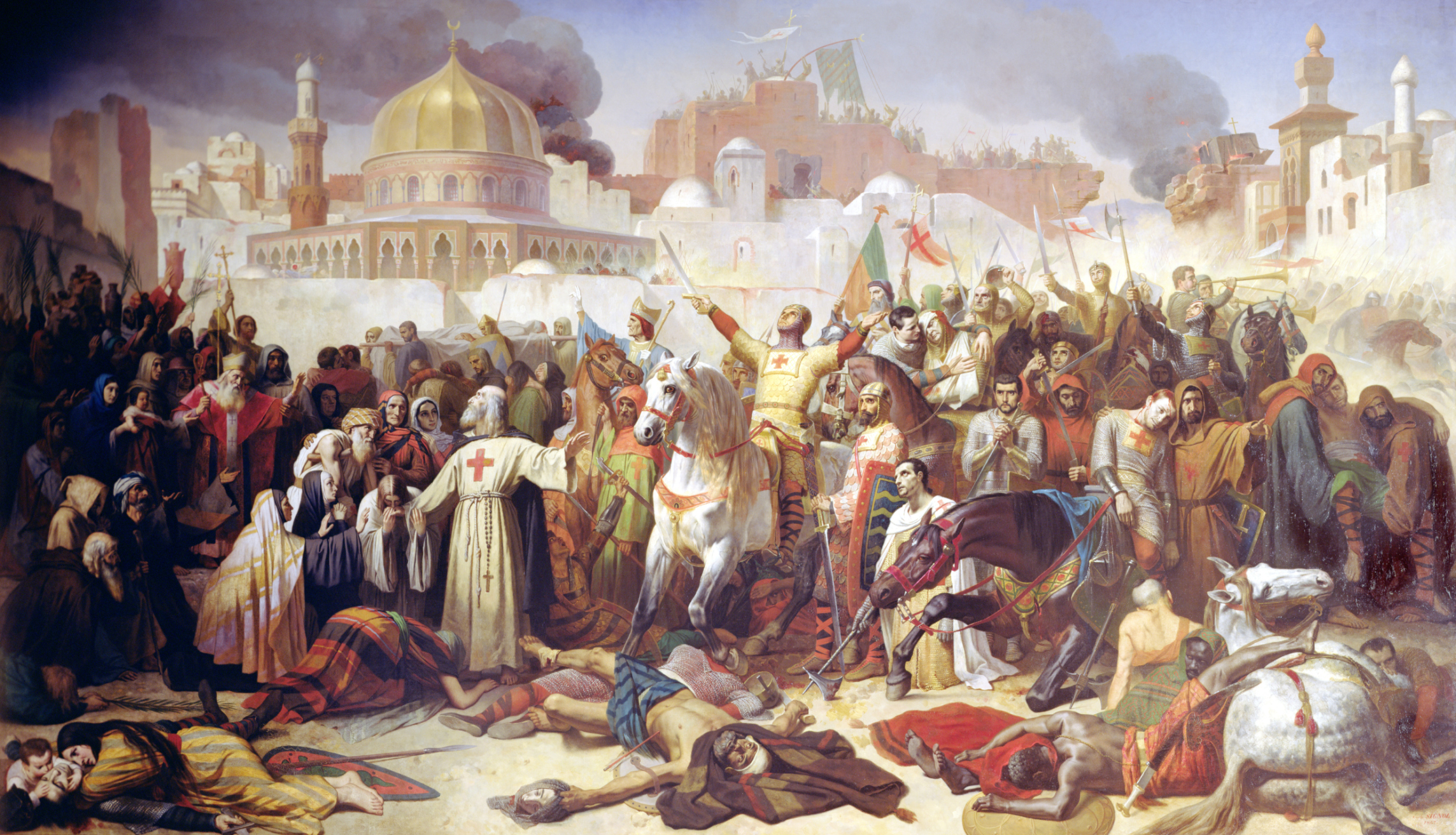|
Ateist
Ateist (russian: «Атеист»; lit. «Atheist») was an antireligious monthly journal in Russian, which was published from 1922 to 1930 in the RSFSR and the USSR. The scientific society «Ateist» arose in 1921 in Moscow, on the initiative of P. A. Krasikov and I. A. Shpitsberg in order to promote the best works on criticizing religion. Shpitsberg became the editor-in-chief of the journal. The first two issues of the publication «Atheist» were printed in the form of a newspaper in 1922, in February and March. The format of the newspaper was considered uncomfortable and it was decided to publish a journal. From April 1922 to April 1925 the journal did not go out. The numbers of the journal from 1 to 59 were published from 1925 to 1930. 59 issue of the journal was the last. The main objective of the journal is to highlight the problem of the history of religion and the history of atheism, to print the chronicle of the spread of atheism in the USSR and abroad, as well as trans ... [...More Info...] [...Related Items...] OR: [Wikipedia] [Google] [Baidu] |
Society Of The Godless
The League of Militant Atheists (), also Society of the Godless () or Union of the Godless (), was an atheistic and antireligious organization of workers and intelligentsia that developed in Soviet Russia under influence of the ideological and cultural views and policies of the Communist Party of the Soviet Union from 1925 to 1947. It consisted of party members, members of the Komsomol youth movement, those without specific political affiliation, workers and military veterans. The league embraced workers, peasants, students, and intelligentsia. It had its first affiliates at factories, plants, collective farms (''kolkhozy''), and educational institutions. By the beginning of 1941 it had about 3.5 million members from 100 ethnicities. It had about 96,000 offices across the country. Guided by Bolshevik principles of communist propaganda and by the Party's orders with regards to religion, the League aimed at exterminating religion in all its manifestations and forming an anti-re ... [...More Info...] [...Related Items...] OR: [Wikipedia] [Google] [Baidu] |
League Of Militant Atheists
The League of Militant Atheists (), also Society of the Godless () or Union of the Godless (), was an atheistic and antireligious organization of workers and intelligentsia that developed in Soviet Russia under influence of the ideological and cultural views and policies of the Communist Party of the Soviet Union from 1925 to 1947. It consisted of party members, members of the Komsomol youth movement, those without specific political affiliation, workers and military veterans. The league embraced workers, peasants, students, and intelligentsia. It had its first affiliates at factories, plants, collective farms (''kolkhozy''), and educational institutions. By the beginning of 1941 it had about 3.5 million members from 100 ethnicities. It had about 96,000 offices across the country. Guided by Bolshevik principles of communist propaganda and by the Party's orders with regards to religion, the League aimed at exterminating religion in all its manifestations and forming an anti-religi ... [...More Info...] [...Related Items...] OR: [Wikipedia] [Google] [Baidu] |
Semyon Kamenev
Semyon Alekseyevich Kamenev (russian: Семён Алексеевич Каменев, 1895 14 March 1938) was an educator, professor, writer, Soviet propagandist of atheism and a scientific worker in the study of problems of religion and atheism. Semyon Kamenev was born in the village of Semyonovka (russian: Семёновка), Kursk uyezd, Kursk Governorate. He received a higher education. He worked as a research fellow at the Central Research Institute of Elementary School, professor. He was a member of the editorial board of «Ateist». Kamenev was a member of the Communist Party of the Soviet Union, RCP(b). He lived in Moscow at 2 Gagarinsky Lane, apartment 2. On 17 December 1937 he was arrested and accused by the Military Collegium of the Supreme Court of the Soviet Union of participating in an anti-Soviet organization. On 14 March 1938 Kamenev was shot at the Kommunarka shooting ground, Moscow Oblast. On 12 May 1956, the Military Collegium of the Supreme Court of the Soviet ... [...More Info...] [...Related Items...] OR: [Wikipedia] [Google] [Baidu] |
Voinstvuiuschii Ateizm
Voinstvuiuschii ateizm (russian: «Воинствующий атеизм»; german: «Der kämpfende Atheismus»; eo, «Militanta ateismo»; lit. «Militant Atheism») was an antireligious monthly magazine in Russian, German and Esperanto, which was published in the course of 1931, January to December, in the USSR. League of Militant Atheists began publishing a magazine «Voinstvuiuschii ateizm» in 1931. Dimitry V. PospielovskyA History of Soviet Atheism in Theory, and Practice, and the Believer, vol 1: A History of Marxist-Leninist Atheism and Soviet Anti-Religious Policies, St Martin's Press, New York (1987) p. 61./ref> The magazine was the organ of the Central Council of the League of Militant Atheists of the USSR. P. A. Krasikov became the editor-in-chief of the magazine. This magazine was a replacement for the magazine « Ateist». The editorial board of the journal included Y. M. Yaroslavsky, F. M. Putintsev, A. A. Ivanovskii, E. D. Krinitsky, A. T. Lukachevsky, N. M ... [...More Info...] [...Related Items...] OR: [Wikipedia] [Google] [Baidu] |
Dimitry Pospielovsky
Dimitry Vladimirovich Pospielovsky (13 January 1935 - 12 September 2014) (russian: Дмитрий Владимирович Поспеловский, transliterated academically as ''Dmítrij Vladímirovič Pospjélovskij'') was a historian, a professor emeritus of history at the University of Western Ontario. He was a prominent researcher in the history of the Russian Orthodox Church. Pospielovsky was born in 1935 in Ryasniki, a village then in Poland, now in Rivne Oblast, Ukraine. He also published a number of articles, in English and Russian, on other issues of Russian history, in particular, on workers' movement at the times of Russian Revolutions and on Russian nationalism. Pospielovsky died in London, Ontario, on 12 September 2014. Bibliography *''Pravoslavnaia tserkov’ v istorii Rusi, Rossii i SSSR''. Moscow (1996) **''Orthodox Church in the History of Russia''. St Vladimir's Seminary Press (1998),*''The Russian Church Under the Soviet Regime, 1917-1982 (Volume 1)''. ... [...More Info...] [...Related Items...] OR: [Wikipedia] [Google] [Baidu] |
Religion In The Soviet Union
The Soviet Union was established by the Bolsheviks in 1922, in place of the Russian Empire. At the time of the 1917 Revolution, the Russian Orthodox Church was deeply integrated into the autocratic state, enjoying official status. This was a significant factor that contributed to the Bolshevik attitude to religion and the steps they took to control it. Thus the USSR became the first state to have as one objective of its official ideology the elimination of existing religion, and the prevention of future implanting of religious belief, with the goal of establishing state atheism (''gosateizm''). Under the doctrine of state atheism in the Soviet Union, there was a "government-sponsored program of conversion to atheism" conducted by Communists. The Communist government targeted religions based on State interests, and while most organized religions were never outlawed, religious property was confiscated, believers were harassed, and religion was ridiculed while atheism was propagate ... [...More Info...] [...Related Items...] OR: [Wikipedia] [Google] [Baidu] |
Religion In Russia
Religion in Russia is diverse, with Christianity, especially Russian Orthodoxy, being the most widely professed faith, but with significant minorities of non-religious people and adherents of other faiths. A 1997 law on religion recognises the right to freedom of conscience and creed to all the citizenry, the spiritual contribution of Orthodox Christianity to the history of Russia, and respect to "Christianity, Islam, Buddhism, Judaism and other religions and creeds which constitute an inseparable part of the historical heritage of Russia's peoples", including ethnic religions or paganism, either preserved, or revived. According to the law, any religious organisation may be recognised as "traditional", if it was already in existence before 1982, and each newly founded religious group has to provide its credentials and re-register yearly for fifteen years, and, in the meantime until eventual recognition, stay without rights. The Russian Orthodox Church, though its influence is t ... [...More Info...] [...Related Items...] OR: [Wikipedia] [Google] [Baidu] |
Red Terror
The Red Terror (russian: Красный террор, krasnyj terror) in Soviet Russia was a campaign of political repression and executions carried out by the Bolsheviks, chiefly through the Cheka, the Bolshevik secret police. It started in late August 1918 after the beginning of the Russian Civil WarLlewellyn, Jennifer; McConnell, Michael; Thompson, Steve (11 August 2019)"The Red Terror" ''Russian Revolution''. Alpha History. Retrieved 4 August 2021. and lasted until 1922. Arising after assassination attempts on Vladimir Lenin and Petrograd Cheka leader Moisei Uritsky, the latter of which was successful, the Red Terror was modeled on the Reign of Terror of the French Revolution,Wilde, Robert. 2019 February 20.The Red Terror" ''ThoughtCo''. Retrieved March 24, 2021. and sought to eliminate political dissent, opposition, and any other threat to Bolshevik power. More broadly, the term is usually applied to Bolshevik political repression throughout the Civil War (1917–1922), as ... [...More Info...] [...Related Items...] OR: [Wikipedia] [Google] [Baidu] |
Persecution Of Muslims
The persecution of Muslims has been recorded throughout the history of Islam, beginning with its founding by Muhammad in the 7th century. In the early days of Islam in Mecca, pre-Islamic Arabia, the new Muslims were often subjected to abuse and persecution by the Meccans (also called Mushrikun by Muslims), a polytheistic Arab tribal confederation. In the contemporary period, Muslims have faced religious restrictions in some countries. Various incidents of Islamophobia have also occurred, such as the Christchurch mosque shootings. Some global conflicts have seen religiously and/or politically motivated belligerents persecute the Muslim population of a region. Notable examples of such persecution have occurred in the Xinjiang conflict in China, the Israeli–Palestinian conflict, the Yugoslav Wars, and many other conflicts. As part of the ongoing Rohingya conflict in Myanmar, the Rohingya genocide has resulted in over 25,000 deaths , the displacement of over 700,000 refugees ... [...More Info...] [...Related Items...] OR: [Wikipedia] [Google] [Baidu] |
Persecution Of Christians In Warsaw Pact Countries
After the October Revolution of November 7, 1917 (October 25 Old Calendar) there was a movement within the Soviet Union to unite all of the people of the world under Communist rule (see Communist International). This included the Eastern bloc countries as well as the Balkan States. Communism as interpreted by Vladimir Lenin and his successors in the Soviet government required the abolition of religion and to this effect the Soviet government launched a long-running campaign to eliminate religion from society.Clark, Joanna Rostropowicz. "The Church and the Communist Power." Sarmatian Review 30.2 (2010) Since some of these Slavic states tied their ethnic heritage to their ethnic churches, both the peoples and their churches were targeted by the Soviets. Across Eastern Europe following World War II, parts of the former Nazi Germany liberated by the Soviet Red Army and Yugoslav Partisans became one-party communist states and the project of coercive conversion to atheism continued. The So ... [...More Info...] [...Related Items...] OR: [Wikipedia] [Google] [Baidu] |
Persecution Of Christians In The Soviet Union
Throughout the history of the Soviet Union (1917–1991), there were periods when Soviet authorities brutally suppressed and persecuted various forms of Christianity to different extents depending on State interests. Soviet Marxist-Leninist policy consistently advocated the control, suppression, and ultimately, the elimination of religious beliefs, and it actively encouraged the propagation of Marxist-Leninist atheism in the Soviet Union. However, most religions were never officially outlawed. The state advocated the destruction of religion, and to achieve this goal, it officially denounced religious beliefs as superstitious and backward. Froese, Paul. "'I am an atheist and a Muslim': Islam, communism, and ideological competition." Journal of Church and State 47.3 (2005) The Communist Party destroyed churches, synagogues, and mosques, ridiculed, harassed, incarcerated and executed religious leaders, flooded the schools and media with anti-religious teachings, and it ... [...More Info...] [...Related Items...] OR: [Wikipedia] [Google] [Baidu] |
Persecutions Of The Catholic Church And Pius XII
Persecutions against the Catholic Church took place during the papacy of Pope Pius XII (1939–1958). Pius' reign coincided with World War II (1939–1945), followed by the commencement of the Cold War and the accelerating European decolonisation. During his papacy, the Catholic Church faced persecution under Fascist and Communist governments. The Nazi persecution of the church was at its most extreme in Occupied Poland. The defeat of Fascism at the end of World War II ended one set of persecutions, but strengthened the position of Communism throughout the world, intensifying a further set of persecutions – notably in Eastern Europe, the USSR, and, later, the People's Republic of China. The Catholic Church was under attack in all Communist governed countries and lost most of its existence in Albania, Bulgaria, Yugoslavia, Romania, Communist China and the Soviet Union (including Estonia, Latvia and Lithuania). Fascist persecutions The Catholic Church was repressed by Nazi German ... [...More Info...] [...Related Items...] OR: [Wikipedia] [Google] [Baidu] |


.jpg)



